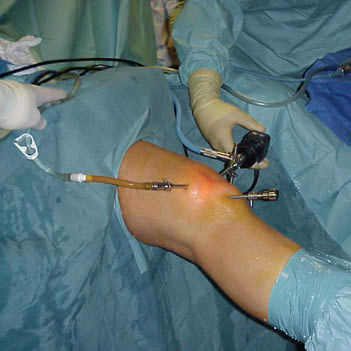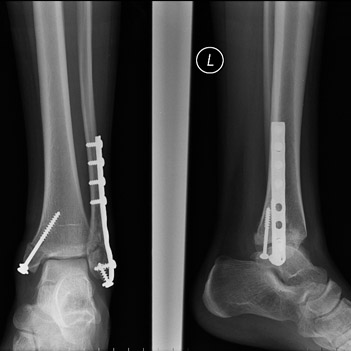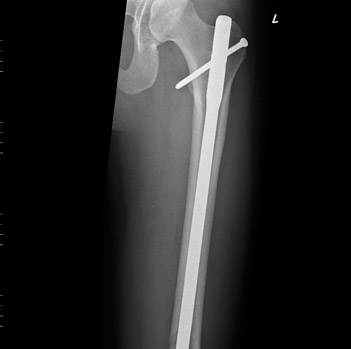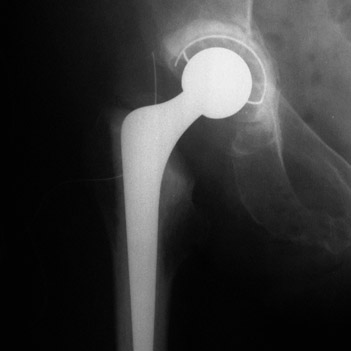My Services.
I have an extensive training and specialist practice in all areas of orthopaedic practice, with the exception of specialist spinal services. My particular interest is in surgery of the knee, including knee replacement, arthroscopy and ligament reconstruction, but I also undertake a wide range of orthopaedic operations and non-surgical care.
My aim is to provide patients with care that is expert, personal and local. I always strive for the highest possible standards of care, and take great care to ensure that patients are involved in the decisions about their own care as much as possible. The vast majority of orthopaedic services can be completed locally, so that patients do not have to travel to get high quality care. There are some conditions that we cannot treat in Warrnambool, due to availability of services or the sort of expertise that comes with doing complex procedures frequently, but in those cases I will personally undertake to arrange for local patients to be seen by an appropriate specialist outside the region.
The list below gives details of some the most common orthopaedic treatments that I offer:
• Knee arthroscopy and meniscectomy. Knee arthroscopy and meniscectomy Anthroscopy is minimally invasive surgical procedure in which an examination and sometimes treatment of damage of the interior of a joint is performed using an arthroscope, a type of camera that is inserted into the joint through a small incision. By using this "keyhole" approach, the surgeon can avoid a large surgical scar over the knee and reduce the recovery time for the patient, while still being able to carry out treatments in the knee through just two or three small incisions (10mm each). An example of such treatment would be that of torn meniscus, often referred to as the knee "cartilage", an important part of the knee. These menisci (there are two in each knee) can be torn during simple activities such as walking or squatting. They can also be torn by twisting forces encountered in sports or other forms of physical exertion. In older adults, the meniscus can be more easily damaged, as it becomes weaker as part of the process of "wear and tear". Generally, the keyhole treatment of such tears is to remove the damaged part, thus allowing the knee to function more freely. Occasionally it is possible to repair larger tears, although the recovery from such surgery is longer.
• Shoulder arthroscopy and decompression. In the same way that the knee can be treated by a keyhole approach, it is also possible to treat a range of shoulder problems by arthroscopy. An example of this is the pain of impingement, where the short muscles around the shoulder become irritated above the joint, limiting a patient's ability to lift their arms. This can be improved by widening the space that the muscles move in, by removing some of the undersurface of the bone directly above (part of the shoulder blade). Again, the keyhole approach has the advantage of more rapid recovery than is normal from traditional open surgery.
• Carpal tunnel release. Carpal tunnel syndrome is pain, tingling and weakness in the hand that is caused by pressure on the median nerve in the wrist. Use of splints can reduce the pain at night, but often an operation is required to relieve the pressure on the nerve, through a cut in the palm, usually done under local anaesthetic.
• Knee arthroscopy and chondroplasty. Chondroplasty refers to surgery of the bearing surface of the joint, the most common being corrective surgery of the cartilage of the knee. This is not usually of great value in wear and tear arthritis of knee, but can be useful in localised joint damage due an injury.
• Removal of support implant. Metalwork of various kinds is used in treating broken bones (fractures) and other bone and joint conditions. It is not usually necessary to remove such metalwork, unless it causes problems such as irritation of the skin over it. In those cases, the metalwork can generally be removed by re-opening the original surgical scars.
• Knee arthroscopy and anterior cruciate ligament reconstruction. Anterior cruciate ligament is an important stabiliser of the knee joint, and is commonly injured in sports such as football, skiing and netball. Patients often suffer a feeling of instability in the knee as a result, and the aim of ACL reconstruction is to replace the damaged ligament with a new structure, usually made by taking two of the patient's own hamstring tendons. The new ligament is placed by a largely keyhole operation, but the surgery does require an extra incision to get at the hamstring tendons. Recovery and return to work is quite rapid, but full return to activity requires a lot of hard work and rehabilitation, and return to high-risk sports is not advised for one year after the operation.
• Hip and Knee replacement. The title "wear and tear" arthritis, or osteoarthitis, suggests that joints simply wear out over time. Of course it is not so simple as that, and the state of your joints are set by a combination of genetics and the effects of your lifetime's activities. For some people, this will lead to a worn out joint, which produces pain that can be related to activity, but is also very troublesome at night and results in stiffness of the joint in the morning or after sitting for a while. In such cases, if the pain is bad enough, surgery to replace the worn joint with a metal and polyethylene artifical joint can be very succesful in easing the pain. This is, however, major surgery that comes with significant risks and a long recovery time, and so is not to be entered into lightly. If your joint is bad enough, joint replacement surgery can be life-changing. The most commonly replaced joints are the hip and the knee.
• Treatment of Hip fracture. A break of the thigh bone (femur) close to the hip joint is called a femoral neck fracture or hip fracture. This is usually an injury of old age, and is related to osteoporosis (thinning of the bone). This injury generally requires surgery, either in the form of a pin and plate to fix the fracture, or a half of a hip replacement (hemisarthroplasty) to replace the damaged part, depending upon the exact fracture pattern. Support by medical specialists is very important in looking after hip fracture patients as they often have other medical conditions, and so close teamworking is vital to achieve good results in a patient group that is often frail.
• Debridement of skin/muscle/bone/fracture. Injuries may involve damage to the soft tissues around a joint, and if they involve a damage to the skin there is a risk of infection getting in and causing problems. In these cases, it is very important to clean and wash the wound, and to remove any damaged tissue (debridement), inorder to reduce the risk of infection. This may require multiple operations over several days in the worst cases.
• Repair fracture of radius (bone)/ulna, Repair of ankle fracture, Repair of femoral shaft fracture. Bone is a truly amazing tissue, constantly being rebuilt throughout life, and with the ability to repair itself when broken. For many broken bones, holding the bone steady with a plaster for a few weeks is enough to allow the break to heal. In some cases, it is difficult to hold the broken bone well enough, or the broken parts are displaced such that healing would result in a bent or deformed bone, or in poor joint function. In these cases the surgeon can use varous strategies involving opening the break to put it back in a perfect position and then fix it with a combination of screws and plates or rods inside the bone. These implants all have the common aim of holding the broken bone steady in a perfect positon while the body heals itself. Breaks of the forearm bones, the wrist, the ankle bones and the thigh (femur) are among the most commonly treated in this way, but just about any broken bone, apart from ribs, can be operated on under specific circumstances.
• Lumbar spinal fusion. Fusion of parts of the spine can be undertaken for deformity or degeneration. This requires specialist care, and while I am happy to deal with non-surgical care of back pain, any consideration of surgery would require a referral to an appropriate specialist. 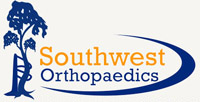
Registered with:
Australian Healthcare Practitioners Registration Authority (AHPRA), No
MED0001582994
Australian Medical Council No 2100201
Society Memberships:
Fellow of Royal College of Surgeons of Edinburgh (FRCSEd)
British Orthopaedic Association (BOA)
International Society Arthroscopy, Knee Orthopaedic Sports (ISAKOS)
Société Internationale de Chirurgie Orthopédique et de Traumatologie (SICOT)
International Affiliate of American Academy Orthopaedic Surgeons (AAOS)
Associate Member of Australian Orthopaedic Association (AOA)
